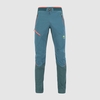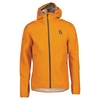Jerry Moffatt interview

 1 / 8
1 / 8 Kurt Albert
Kurt Albert
During the early 1980's sport climbing was still embryonic. Trad, sport, bouldering, yo-yoing, on-sighting, flashing, headpointing and all other nuances boiled down into one single game and were just waiting to be discovered as individual, separate disciplines in their own right. In Britain this exploration was being guided by the likes of some all-time greats such as Pete Livesy, Ron Fawcett and John Redhead to name but a select few, and when young Jerry Moffatt exploded on the scene in the early 1980's he astounded all with impressively fast repeats of the hardest routes in the country.
Moffat came and conquered, and it wasn't long before he established his own testpieces, both on trad and sport since the distiction between these two was still blurred. What wasn't blurred though was Moffatt's focus on vertical domination, and this proved truly insatiable.
Between 1982 and 1984 Jerry repeated practically everything there was to repeat in the States, Germany and France and as he did so he became of the world's first professional climbers. Even after two years off due to injury there seemed no stopping him, as he returned with a vengeance, stronger and more motivated than ever before. His first ascents and repeats over the next 15 years are simply too many to list and, in truth, the brief summary published below does little justice to the length and breadth of Moffat's achievements.
Jerry Moffatt is, in short, a climber who like few others left his lasting mark, worldwide, on the early development of this vertical game. A climber who impressed for his drive, tenacity and ability to excell not just in one discipline, but across the entire spectrum from trad to sport and bouldering. With his highly anticipated autobiography finally out this February, we felt it was time to check in and find out more from the man himself. Between one day at the crag and the next riding waves in the North Atlantic, Jerry granted us this long, exclusive interview. We hope you find this step back in time and brief analysis of two decades at the top as interesting as we did.
Jerry Moffatt interview
by Nicholas Hobley and Niall Grimes
For those perhaps new to the game... who was Jerry Moffatt?
Well, put simply I suppose I was a prolific climber in the '80's and '90's. Probably one of the best climbers in the world. Someone who travelled all over the place, did hard new routes, established difficult boulder problems, took part in competitions for a couple of years and won some of them!
One of the world's first professional climbers therefore?
Yes, but it depends on what you mean by professional. In Britain as at that time no one was getting paid any money at all. We're talking about back in 1982, 1983, and for me the professional bit just meant applying myself totally, giving it 100%. In 1984, I finally became a sponsored climber, when the owner of Wild Country gave me a free webbing sling. He told me it was very special, as it was eight inches long. All the others at the time were six! Then Fires rock shoes and sticky rubber first came out, that's when sponsorship really started.
You had obviously already began to make a name for yourself at the start of the 80's and with your trad background you were hot on the heels of Ron Fawcett...
I remember the first time I saw Ron at the crag, when I was about sixteen. Ron was a massive legend. I was in the school climbing club and we all just hid in the bushes at looked at his massive hands and arms. Ron was certainly the most prolific climber of the 80's doing a bunch of excellent first ascents. Although he was still doing some great new routes, by 1983 I was pretty sure I was climbing better than him in terms of difficulty. I looked up to him though and we never had any problems.
In 1983 you climbed your most dangerous trad route, Master's Wall on Cloggy.
At that time to be respected, you really had to be putting up really scary new routes. That was where it was at, in Britain at least. Master's Wall is probably where I risked most. You have to realise that things were very different back then. If I were to do the route now I'd abseil down it about 50 times and I'd probably toprope it before going on lead. At the time though I abbed down it once, had a look at the gear and only a quick look at the route because I didn't want to take the fear out of the experience. The next day I abseiled down it once more, checked it out again, removed the bolt and led it. Technically I didn't do it onsight but I really did climb into unknown territory. It was more of an ethical thing back then. Interestingly this bold approach seems to be back in vogue. Now there's a new breed of climbers really keen on trying things from the ground up, on really dangerous climbs.
What was the scene like in the UK at the start of your career?
The first real scene I came across were all the people who lived at the crag in Stoney Middleton. When I arrived there I was only seventeen years old, and I'd heard about this famous Stoney Woodshed where people lived. When I got there it was a shelf for wood, no walls. I lived there for 2 years. They were this dirty bunch of people, none of them worked, and we all just lived on practically no money, where white bread and tomato ketchup was the main meal of the day. I didn't have a stove, and just drank water, or had 1 or 2 cups of tea in the cafe. People hitched everywhere, nobody had cars. Nearly all the routes were trad, there was no bolt clipping, it was fairly run out and the emphasis was trying to climb dangerous routes. Typically you'd never spend more than 2 days on a route, you'd probably only do 5 or 6 routes in a day. None of this warming up and spending a whole day on a single climb. It was a small scene, wherever you went you saw the same people.
What are your fondest memories of back then?
All my first ascents I'd say. But also the roads I traveled to get these first ascents: the training, finding a route, cleaning it, putting the bolts in, working the moves. That was the fun part. The difficult part was actuality redpointing it. Knuckling down on a hard route, being focused and finishing it off. That was the stressful part.
Talking about travelling - this has always been a big part of your climbing, hasn't it?
Yeah, a really big part. I used to look at magazines when I was a kid, and just devour the stories about America. It just seemed really cool, and I always wanted to go there. So I spent a winter in a horrible little limestone cave in the Peak District, bouldering, getting fitter and stronger so I could go to America and do the hardest routes. I'd go there on freezing wet days, find a dry couple of holds and train on them. It was brilliant. Then from that, I went to America, did the second ascents of Genesis and Psycho and flashed Supercrack and Equinox. Four of their hardest routes!
Was that a buzz?
A massive buzz. I remember being sat on the plane on the way home again, nineteen years old, thinking I must be the best climber in the world! Can you imagine it?
What would the best climber in the world be?
Well, at different times, different things. It's essential that you go to as many countries as possible, do their hardest routes and add even harder ones of your own. Maybe in some ways it was easier to be the best in the world back then because things weren't so developed. For a start, there was only one kind of climbing. Sport climbing didn't exist, bouldering didn't exist. There were no competitions. There was no on sighting or red pointing. Climbing was done with a set of nuts and a rope, perhaps some routes had bolts or pegs, but they didn't feel that different. It wasn't even trad climbing, it was just climbing.
In 1984 you were at your best.
I did the first onsight of the Phoenix in Yosemite that year. And flashed Chimpanzidrome, that was special. That was on the day of my 21st birthday, and that night, Ben Moon and me slept beside the motorway beside a concrete building in freezing fog. I couldn't have been happier.
Then along came injury...
I had two years off in 85/86 due to an elbow injury. I went to one of the best doctors in America, he was treating top gold medal athletes at the time. He diagnosed it as tendonitis and although I did all my exercises it didn't improve until I had some tests done in Germany and there they realised I had a compressed nerve. Diagnosis, operation, recuperation - all this takes a long time and a couple of years went by.
During which things evolved rapidly. And Antoine Le Menestrel soloed your Revelations, the hardest route in Britain at the time...
Yeah, I was gutted when he did that. I was impressed, but by then, the route was a year old, and I had been abroad, so it's not like he was topping my achievements in that way. That time thing is an important factor.
When you finally returned you more motivated than ever...
It had been a tough time, I had wanted to climb but I couldn't so when I got the all clear I was really excited. When I was forced to stop I was climbing better than anyone else, then when I started again everyone was better than me. It took a lot of hard work to get back into shape but, to be honest, it's never hard work when you enjoy it.
Back on rock at last!
I really enjoyed the routes in France, in Buoux especially. La Rose and Le Minimum spring to mind, doing early ascents of these fantastic routes in 1987. On-sighting hard in Germany, climbing in the Frankenjura where I established Stone Love in 1988 was great as well.
You then went on to establish Britain's first 8c, Liquid Amber at Lower Pen Trwyn
Liquid Amber is my top limestone route. I climbed it back in 1990 and it's only had a couple of repeats since then. It's a tough route - nowadays it would undoubtedly be graded 8c+, no question about that.
You made a name for yourself not only for cutting edge routes but also extremely hard boulder problems
Yes. I think we didn't really realise what we up to though. My early boulder problems weren't publicised, no one seemed to be interested in them at all. Now, years later, bouldering has become really popular, almost more popular than climbing itself! I established plenty of hard stuff in the UK such as The Joker and The Ace at Stanage, and also did some new boulder problems in Yosemite like the Dominator, Force and Stick it.
You obviously thrived in a very competitive environment. How would you describe your relationship with other climbers?
Good I'd say, I climbed with Mark and Antoine Le Menestrel, stayed at Patrick Edlinger's house, climbed with Wolfgang Güllich and Kurt Albert, Stefan Glowacz, all the top climbers. Ben Moon is a great friend and we've trained, climbed and bouldered together for years. I always wanted to beat them and they always wanted to beat me, but it was always pretty friendly competition really.
Talking of which? You witnessed the start of modern climbing competitions?
Well I missed the very first competitions because I was injured. I went into the second year of competitions and immediately I struggled. I was climbing way below what I was capable of.
Shouldn't you have been the man to beat?
I think I should have been, but I definitely wasn't. People were climbing a lot better than me and I found myself really struggling on routes I should have breezed up. I remember in Bardonecchia I fell off a super easy qualification climb. At the time you had 10 minutes and could try as often as you liked. I got back on and shot to the top but since it was so easy you had to onsight it to qualify. I was devastated.
What did you put the struggle down to?
Mentally I wasn't prepared. You have to prepare your mind differently in competitions than when climbing outside. I realised I had a psychological problem after a competition in Munich - I slipped in the Superfinal and was really distraught. I couldn't sleep for a week, wondered if I could stand the pressure. Then I bought a book on how to prepare yourself mentally and I immediately realised that up until then I'd been barking up the wrong tree. I'd been getting stronger, lighter and more powerful, but none of these meant anything because I wasn't climbing in the right frame of mind. So I found out how your mind works under pressure and immediately after reading that book I competed in Leeds and won my first competition. The book changed everything for me: I won 10 competitions in two and a half years and my worst result was 5th.
What got you to the top?
I think to get to the top of any sport you need the right genetics, body type, muscle fibre. You need to have sustained motivation and drive. From what I have seen its the motivation and drive which lets a lot of people down and I was always strong in this area.
So what were you biggest weaknesses?
I always worked on my weakest point, so I worked particularly hard on power by bouldering. Thinking about it though my biggest weakness was my flexibility. it would have been really helpful to be more flexible. But you can always overcome this by pulling hard! And I did! If someone wanted a climbing tip I'd say work on your flexibility, stretch often as this will keep you away from injury. I'd also say climb on lots of different types of rock for your technique, that's why my technique was good. I used to think of it like an encyclopaedia of moves stored inside your brain. The more you climb, the more you acquire and the better you become.
What about dieting?
Diet was always very important to me I tended to keep light all year round but specifically if I had a particularly difficult problem I was unable to climb or competition I wanted to win, I would try and drop my weight artificially by dieting for a short time. Yet if I stayed that light all the year round I found I became susceptible to injury and getting ill.
In 1992 you stunned everyone by repeating one of the world's hardest routes, Punks in the Gym, in only two days.
Yeah, I was very fit at the time and had good conditions. I started it quite late on the first day and found it much easier than I had anticipated. I think if I had started earlier and had been more focused I would have done it in a day. It is a truly fantastic route.
Over the years, as climbing developed, you changed your focus and excelled at lots of different disciplines.
Yeah. I probably did the first onsights of 7c, 7c+, I redpointed the three hardest sport climbs in France and America, I onsighted 8a, I did boulder problems like Superman in the UK and The Dominator in Yosemite which were among the hardest in the world at the time, I won loads of competitions, did first ascents of 8c and 8c+s in the UK, did E9 on gritstone. All in all I was at one time or another at the top of all these disciplines.
It would be impossible to do that today?
Yes and no. Sure it would be very difficult, but it wasn't particularly easy in the 1980s or 90s. As I started to move away from climbing, I was impressed by Chris Sharma. He traveled to the major areas, repeated the climbs and added really impressive routes of his own. He's done competitions, bouldering, deep water solos, redpointing and onsighting.
But he hasn't shown much interest in traditional climbing
No, but that isn't where the game is at today. The routes on nuts aren't whet you are judged on. When I was young, you had to do hard, scary climbs to get recognition. That's why I did Master's Wall. But routes like that aren't the game so much any more. People do them, but it's a bit more of a specialised game, on a world scale at least. If I was doing at all over again today, then I wouldn't try to be having the hardest day's soloing or the most dangerous route, like I did in 1983.
Your climbing career came finished with a bang in 2002 when you established The Ace, a Font 8b at Stanage. After which you virtually disappeared from one day to the next.
Had I been able to earn the same amount of money through climbing as I do now then I would have continued. At one point in time though I asked myself how long did I want to be doing this for and I realised that I wanted to make myself financially secure. I wasn't earning enough to support my family; I'm married with two children and I wanted to have the best for them. At that time I found some other business deals - I couldn't work on them and climb at high standards the same time.
So what about now?
I still climb, if it's nice weather I still go out and climb, but I've come to the stage at 45 that all my fingers ache, it's hard to do. When I was doing new routes that was the excitement, the thrill came from doing a first ascent, from trying to do the hardest route or winning a competition. It's very different from going out and having fun on the rocks. I still might go out and climb, but right now I'm busy doing lots of other things. Like surfing, that's my focus at the moment. Whenever there are good waves I'll go out surfing all week...
Jerry Moffatt - Significant Ascents and Dates
1963 Born Jeremy Charles Moffatt.
1978 Takes up climbing while at St David's College, Llandudno.
1980 Leaves school and moves to Tremadog. Repeats many routes including Strawberries (E6 6b, FA: Ron Fawcett, 1980).
1981 FA: Helmut Schmitt (E6 6b), Stoney Middleton, UK.
1981 FA: Little Plum, Pitch 1 (E6 6c), Stoney Middleton, UK.
1981 FA: Psyche n Burn (E6 6b), Tremadog, Wales.
1982 FA: Little Plum, Pitch 2 (E6 6c), Stoney Middleton, UK.
1982 Repeats: Fast, second ascents of three Ron Fawcett routes – The Prow (E7 6c, 1982), Indecent Exposure (E6 6b, 1982) at Raven Tor, and Tequila Mockingbird (E6 6b, 1982), Cheedale. All Peak District, UK.
1982 Flash: Supercrack (5.12c, FA: Steve Wunsch, 1974), Shawangunks, USA.
1982 Repeat: Psycho Roof (5.12d, FA: Jim Collins, 1975), Eldorado Canyon, USA.
1982 Repeat: Genesis (5.12d, FA: Jim Collins, 1979), Eldorado Canyon, USA.
1983 Flash: Equinox (5.12d, FA: Tony Yaniro, 1980), Joshua Tree, USA.
1983 FA: Ulysses (E6 6b), Stanage, UK.
1983 FA: Master's Wall (E7 6b), Clogwyn Du'r Arddu, Wales.
1983 FA: Masterclass (F8a), Pen Trwyn, Wales.
1983 On-sight: Sautanz (IX, F7b+, FA: Kurt Albert, 1982), Heisse Finger (IX+, F7c, FA: Wolfgang Güllich, 1982) and Chasin' the Trane (IX+, F7c, FA: John Bachar, 1981), Frankenjura, Germany.
1983 FA: Ekel (IX+, 7c+), Frankenjura, Germany.
1983 FA: The Face (X-, F8a), Frankenjura, Germany.
1984 Flashes Chimpanzodrome (F7c+, FA: Jean Pierre Bouvier, 1981) and a 7b and 7b+ on his 21st birthday and repeats Bidule (F8a+, FA: Marc le Menestrel, 1984), Saussois, France.
1984 On-sight: Pol Pot (F7c+) Verdon Gorge, France.
1984 FA: Papy on Sight (F8a), Verdon Gorge, France.
1984 Repeat: Statement of Youth (F8a, FA: Ben Moon, 1984), Pen Trwyn, Wales.
1984 FA: Verbal Abuse (E7 6c), Raven Tor, UK.
1984 FA: Revelations (F8a+), Raven Tor, UK.
1984 FA: Messiah (E6 6c), Burbage South, UK.
1984 Flash: Super Imjin (5.12b/c, E6 6b, FA: Isao Ikeda, 1984) Ogawayama, Japan.
1984 Repeat: Midnight Lightning (V9, FA: Ron Kauk, 1978), Yosemite, USA.
1984 On-sight: The Phoenix (5.13a, FA: Ray Jardine, 1977), Yosemite, USA.
1984/1985 Injury begins to worsen.
1986 During March and April, undergoes a series of operations on his elbows in the Olympic Hospital, Munich.
1986 Given the all clear and starts training again in November.
1987 Repeat: Ghettoblaster (X+, F8b FA: Wolfgang Güllich, 1986), Frankenjura, Germany.
1987 Repeat: Le Rage de Vivre (F8b+, FA: Antoine le Menestrel, 1986), Buoux, France. Second ascent.
1987 Repeat: Le Minimum (F8b+, FA: Marc le Menestrel, 1986), Buoux, France. Jerry makes the third ascent.
1988 Repeat: La Spectre des Surmutant (F8b+, FA: Jean Baptiste Tribout, 1988), Buoux, France. Jerry becomes the first person to climb the three hardest routes in France.
1988 Repeat: Scarface (5.14a, FA: Scott Franklin 1988), Smith Rock, USA.
1988 Repeat: White Wedding (5.14a, FA: Jean Baptiste Tribout 1988), Smith Rock, USA.
1988 Repeat: To Bolt Or Not To Be (5.14a, FA: Jean Baptiste Tribout 1986), Smith Rock, USA. Jerry becomes the first person to climb all three F8b+ (5.14a) routes in both France and the USA.
1988 FA: Stone Love (X+/XI-, F8b+), Frankenjura, Germany.
1988 FA: Superman (Font 8a+), Cressbrook, UK.
1989 Competition results: Leeds (1st place) Jerry emphatically wins at Leeds in front of a home crowd.
1990 FA: Liquid Ambar (F8c/+), Pen Trwyn, Wales.
1991 FA: Stick It (Font 8a+, V12) and The Force (Font 8a, V11), Yosemite, USA.
1992 Repeat: Punks in the Gym (32, F8b+, FA: Wolfgang Güllich, 1985), Grampians, Australia.
1992 FA: Zorlac the Destroyer (31, F8b), Grampians, Australia.
1992 On-sight: Serpentine (29, F8a, FA: Malcolm Mathesen 1988), Grampians, Australia.
1993 FA: The Dominator (Font 8b, V13), Yosemite, USA.
1994 FA: Big Kahuna (5.13c/d, F8b), Lions Head, Ontario, Canada.
1995 FA: Evolution (F8c), Raven Tor, UK.
1995 FA: Renegade Master (E8 7a), Froggatt Edge, UK.
1995 FA: Progress (F8c), Kilnsey, UK.
1996 FA: The Joker (Font 8a), Stanage, UK.
1997 FA: Samson (E8 7b), Burbage South, UK.
2002 FA: The Ace (Font 8b), Stanage, UK.
2002 Repeat: Nutsa (Font 8a+, FA: Fred Nicole, 2000), Rocklands, South Africa.
FA = First Ascent
| Links Planetmountain | |
| Climbing at Buoux | |
| Climbing at Cloggy | |
| Links www | |
 Jerry Moffatt –Revelations. The autobiography by Veterbrate Publishing www.v-publishing.co.uk |
|



 Copia link
Copia link

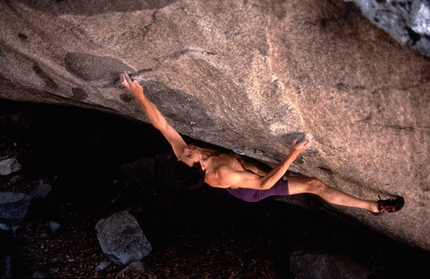

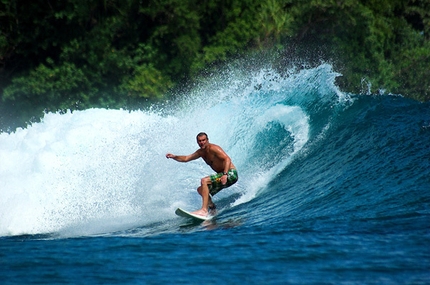
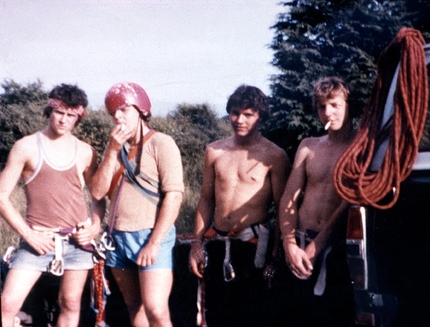
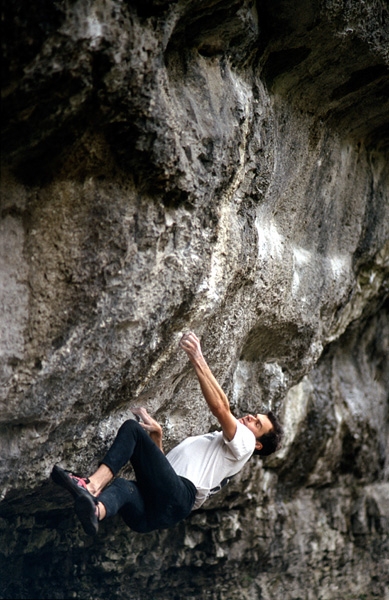
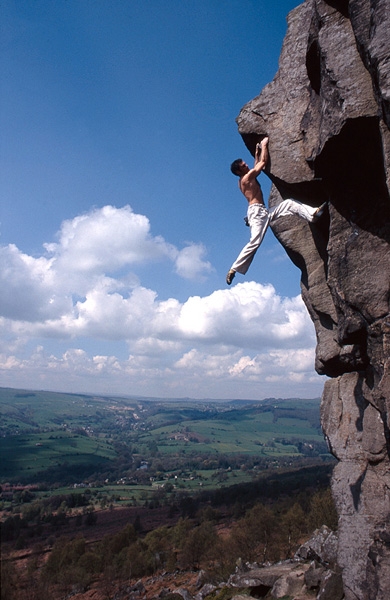
 See all photos
See all photos













